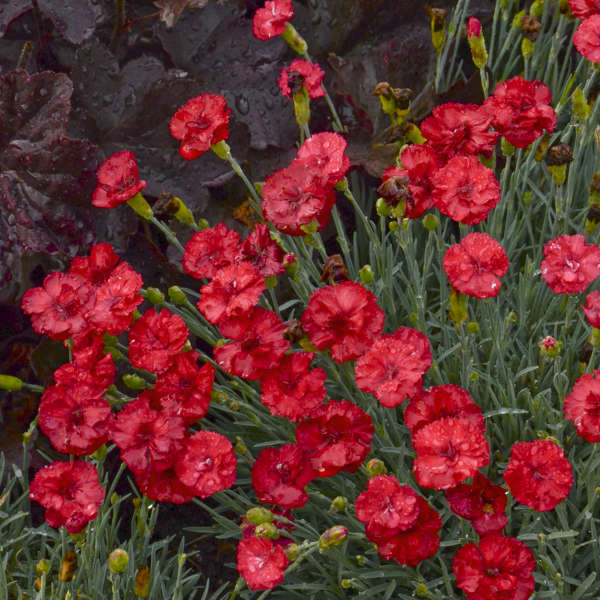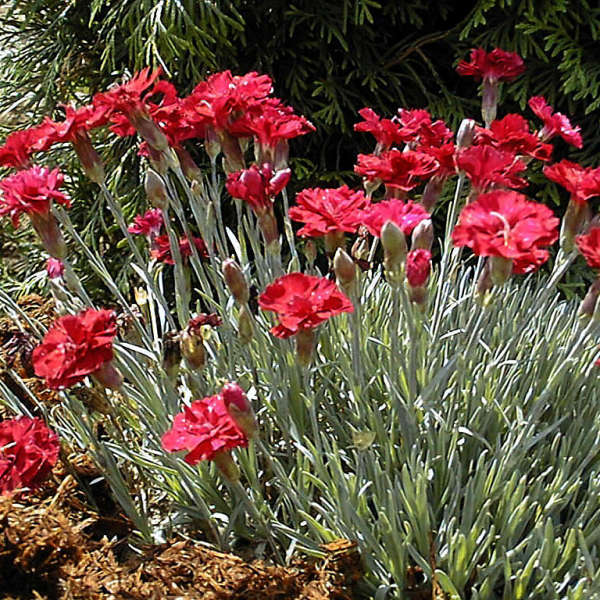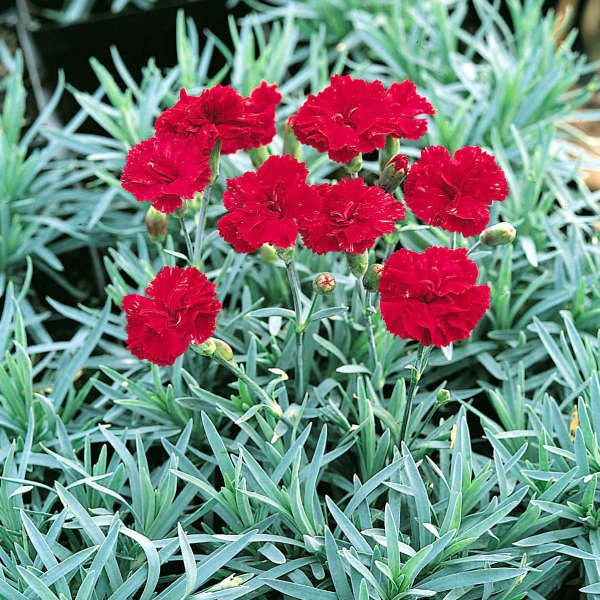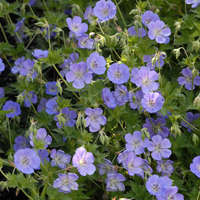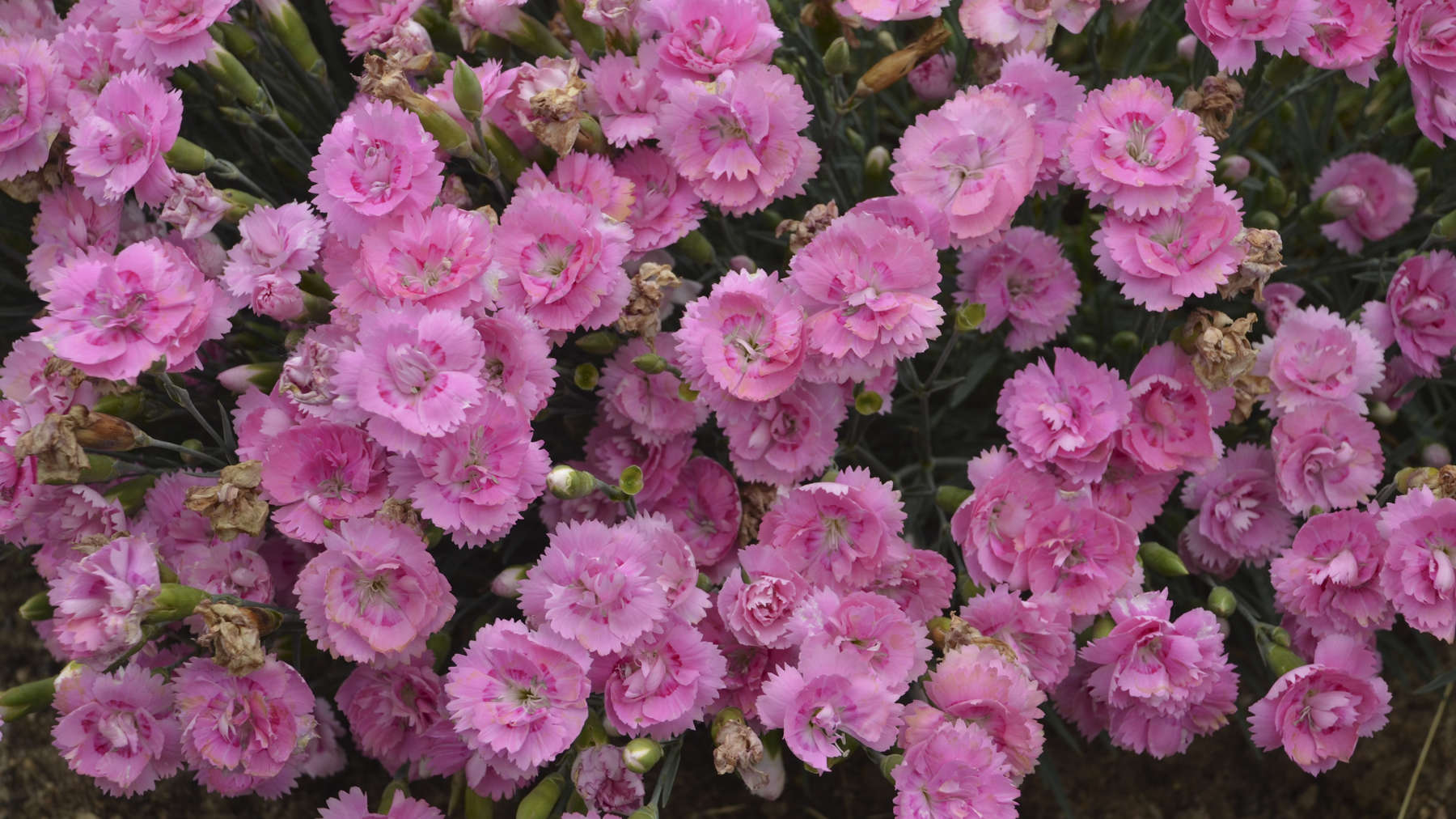Dianthus 'Frosty Fire'
Common Name: Pinks
Double, chinese lacquer-red blooms explode above mounds of icy blue-green, evergreen foliage. If deadheaded, this cultivar will flower in early summer and in the fall.
In the carnation family, Dianthus cultivars deliver gorgeous single, semi-double, and fully double flowers. Singles tend to deliver more flowers while doubles are significantly larger, sometimes more than twice the size. Singles also tend to grow quicker and can appear like a carpet in the landscape at maturity.
